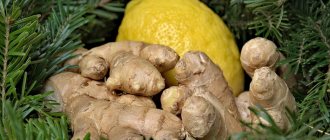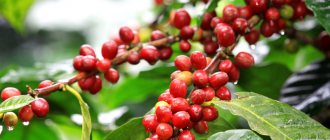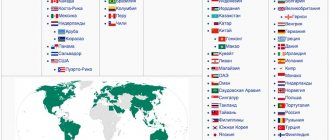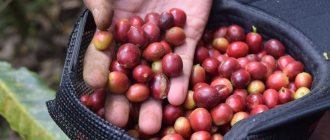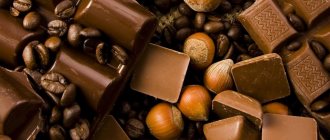The drink made from coffee beans is so popular that it deserves its own holiday. Until recently, coffee day was celebrated in each state at different times. The date was chosen arbitrarily. Now Coffee Day is held simultaneously all over the world. Every coffee lover should know what date this day falls on and what is special about this event.
International Coffee Day
This day unites all drink lovers and baristas around the world. It is celebrated not only in the countries of producers and exporters, but also in many other countries of the world. And despite the fact that in 2015 it was decided to celebrate it on October 1, nevertheless, not everyone adheres to this particular date. And the holiday itself is celebrated everywhere in different ways - these can be coffee carnivals, sales, promotions or tastings in local coffee shops. But nothing prevents you from celebrating the holiday on the day that you personally want and the way you yourself wish. In the near future, it is planned to celebrate it in all countries - and there are about 75 of them, including Russia - at the international level.
The history of the holiday
In the home circle or in the company of friends, the holiday can be celebrated by drinking the hero of the occasion, namely coffee. You can make a dessert table at home and stock up on this invigorating aromatic drink, or simply go to a local coffee shop and try different types of coffee. Initially, during the harvest on coffee plantations, it was customary to organize various fairs and festivals with colorful performances. Famous baristas were invited to these events, who not only surprised those who came to the celebration with their skills, but also gave them the opportunity to try different types of drink.
Now it’s difficult to say where exactly they first came up with the idea of celebrating Coffee Day, but it is believed that the first to officially celebrate the holiday were in 1983 in Japan. It happened on October 1, and the initiator was a local coffee organization. In some countries, the holiday is celebrated on April 17 or September 29, but there is no exact explanation for these dates.
Traditional coffee drinks in different countries of the world + photos
Have you tried drinking coffee with eggs? What about garlic? Can't imagine this yet? But in some countries, these recipes for preparing the drink are not just popular, but also traditional. Therefore, when, no matter how on International Coffee Day, try these unusual tastes, which have their own secrets of preparation.
Egg Coffee (Vietnam)
The recipe is based on egg yolk, condensed milk, sugar and hot coffee.
Lapland coffee (Finland)
First, Lapland cheese is placed in the cup, then coffee is poured.
Espresso Roman (Italy)
Espresso with a slice of lemon, and before drinking, the lemon must be “flatten” with a spoon on the walls or bottom of the cup.
Lagrima (Argentina)
Only a couple of drops of strong coffee are added to the milk foam. Simply put, it's more like milk and coffee.
Bonbon (Spain)
This is espresso with condensed milk. And if you mix half regular milk with half condensed milk, you get leche y leche.
Coffee with spices (Morocco)
A mixture of spices like sesame seeds, black pepper and nutmeg is ground with coffee beans to create... a really strong drink.
Coffee and tea (Hong Kong)
The mix of coffee and tea with milk impresses from the first sip! You will need 4 bags of black tea, pepper, condensed milk and 2 shots of coffee.
Frappe (Greece)
Coffee, ice cream, milk and ice water are the ingredients for a delicious frappé.
Pharisee (Germany)
This drink was invented in Germany in order to mask the presence of alcohol at family celebrations: a decent portion of rum in the coffee is “hidden” under the copious amount of whipped cream.
Touba (Senegal)
During coffee roasting, Guinea pepper grains are added. The drink itself is brewed like regular filtered coffee.
Coffee with garlic and honey (Türkiye)
Popular drink in Turkey. This coffee is also called “The Old Moor’s Recipe.”
Coffee with orange (Jamaica)
Jamaica is primarily associated with rum. It is not surprising that traditional Jamaican coffee is prepared by adding this strong alcoholic drink to it.
The name of coffee was given by the Arabs
The origin of the ancient name “coffee” entered the English language in 1598 from the Dutch word “koffie”.
Historians do not have a single opinion on where the name coffee came from. There are several versions, the most popular and quite plausible is associated with the nomadic Arabs. “Kava” translated from Arabic means “invigorating”, “giving strength”. It was this drink that nomads used to invigorate themselves during long marches. The name was preserved, but in Western European countries the drink began to be called “cafe” or “cafe”.
Another version is associated with the province of Kafa. It was here that trees were first grown for industrial purposes and named after their country. The name has been preserved, but has been slightly transformed.
International Coffee Day in Russia
As mentioned above, Coffee Day is celebrated by 75 countries that are members of the International Coffee Organization, including Russia since 2015. Although at the moment there is no official coffee holiday in Russia, it can be safely celebrated on October 1 in the same way as they do in some countries.
Our country has its own history of the holiday:
- Since 2003, the International Tea and Coffee Festival with fairs, sales, auctions and tastings began to be held in Moscow. At the end of May, concerts are held in open areas, and the festival is focused on Brazilian Coffee Day. It is worth saying that every year the festivities become more colorful, processions take place, and the number of participants is constantly growing.
- 5 years later, in 2008, a similar event was also held in St. Petersburg, but it took place at the end of August. In addition to this festival, the Coffee Museum was also opened, where they conduct drink tastings and the best baristas compete. The whole city is saturated with the aroma of coffee; master classes are held for those interested.
- A year after St. Petersburg, in 2009, Yekaterinburg also held a similar holiday with quizzes, tastings and even coffee marathons.
By the way, from the end of January, January 25, Russia also celebrates National Irish Coffee Day for a week. It is not surprising that many Russians like it; what, if not whiskey with cream, which is part of the coffee drink, will best warm you up on cold winter evenings?
Let us recall that in Russia they first tried coffee during the reign of Prince Vladimir Svyatoslavovich and at that time it was called “kava”. This drink spread thanks to Peter I, when he first tried this drink in Holland. Having become addicted to coffee, the king issued a decree stating that all subjects had to drink coffee, which at that time was sold in pharmacies and was credited with healing properties.
The first coffee shop in history opened in 1500
The first information about the coffee drink dates back to the 1000s AD.
The discoverers of invigorating nectar were the Arabs; it was they who brought grains from Africa and began to grow them on the Arabian Peninsula. The drink bore little resemblance to everyone’s usual coffee – cinnamon and crushed ginger coffee were added to the aromatic liquid. From the Arabian Peninsula, the coffee tree came to the Ottoman Empire. It was not until the 16th century that traders began transporting grains by sea to Europe.
It is said that the first coffee shop was opened in 1554 in the Tahtakale region by Halepli Hakem and Surieli Shems
The first coffee shop was opened in Turkey around 1500. Coffee appeared in England much later - around 1600. For a long time, only men were allowed to drink the invigorating liquid.
Bitter beans arrived in France in the 1700s; in Russia, the appearance of coffee occurred under Tsar Peter the Great. According to historians, the drink did not gain much popularity in the country. Tsar Peter had to open special coffee shops and almost force people to drink “bitter drink,” which is what his subjects called the aromatic liquid.
International Coffee Day in different countries of the world
Each country has not only its own traditions, but also its own holidays. So coffee day has different dates both in Europe and on the American continent or in Asia.
Coffee Day in Europe
Despite the fact that the holiday is officially scheduled for October 1, few people still adhere to this date. But it is quite possible that soon this day will come into full force, and festivities will take place twice a year - on the official date and the one that currently exists.
Italy - the coffee holiday has been celebrated since 2009 on April 17 and is called espresso day. This name was not given in vain - after all, this country is the ancestor of this drink since 1938, when an Italian invented a coffee machine. Espresso is translated as squeezed. By the way, if you don’t want to lose face, never say expresso, otherwise you risk being ridiculed. It is celebrated not only by lovers of the invigorating drink, but also by professional baristas who compete with each other. On this day, drink prices are reduced, new original recipes are invented, treats and booklets with recipes from the barista are distributed. Although Espresso Day is not so simple - coffee establishments must obtain special permission from the National Institute of Italian Espresso. Approximately 3,500 coffee establishments take part in the celebration.
By the way, Italians have another holiday dedicated to green coffee, which is celebrated on September 23. No permits are required to carry it out. At the same time, the residents of this country are big fans of Espresso.
Ireland - here Coffee Day is also celebrated twice a year - on January 25 and September 19, while the first date is also celebrated in Russia. Just as Italy has its own espresso day, Ireland has its own Irish coffee day, which lasts throughout the week. This event is dedicated to Irish coffee for a reason - after all, this warming drink was invented here. National Coffee Day is celebrated on September 19, and if the Irish join the official date of October 1, then there will already be three holidays dedicated to coffee.
Iceland is a holiday dedicated to coffee; it does not have a specific date; it is celebrated with the arrival of spring and the sun. That's why they call it here - sunny coffee day. It is noteworthy that it has been celebrated since 1772, so Iceland can rightfully be called one of the origins of this celebration. It was then, according to legend, that local residents greeted the arrival of spring and the sun with a cup of coffee in one hand and a pancake in the other.
In Austria, coffee day began to be celebrated on October 1 back in 2002. The residents themselves want Vienna to be the coffee capital of Europe. Coffee shops are full of visitors who are entertained and treated to different coffee recipes.
Ukraine has been celebrating coffee day since 2007, and this day falls at the end of September. Residents of Lvov are especially sensitive to this holiday, and there is an explanation for this. It was a native of this city, Yuri Franz Kulchitsky, who was the first to bring coffee from Turkey to Europe and taught to drink this drink not only with sugar, but also with milk. Just like in other cities, this day is accompanied by fairs, discounts and barista championships.
Coffee holiday in other countries: In Switzerland - May 16, in Germany - October 1.
Coffee Day in America
For this continent, coffee is not only a pleasure, but the source of livelihood for millions of people working on plantations or otherwise related to the drink.
In the United States of America, the Orleans Coffee Festival began to be celebrated in New Orleans on September 29, 2009, and it was here that they decided to make this event an annual event. In other cities, celebrations began in 2005. They organize coffee carnivals, performances, entertainment and shows. By the way, September 6 is also celebrated as Coffee Ice Cream Day, and July 26 is Coffee Milkshake Day. As they say, go for a walk, go for a walk, especially since these days coffee sales are increasing many times over.
In Brazil, Coffee Day falls on May 24 and is celebrated with carnivals in different cities of the country. Who doesn't know Brazilian coffee? It is known for its extraordinary roasting, and the Brazilians themselves are very proud of it. Moreover, for this country coffee is the main source of income.
In Colombia, National Coffee Day falls on June 27 and is accompanied by a parade of jeeps loaded with bags of coffee. For rural areas, jeeps are the most suitable transport, and elegant decorations give them a festive look. On this day, coffee literally flows like a river - after all, this is the main coffee country!
For Costa Rica, which belongs to Latin America, coffee is the main export product. Coffee day here falls on September 12th.
In Peru, the coffee holiday is celebrated on the fourth Saturday of August. Although Peru is located not far from Brazil, the locals themselves do not drink this drink in such quantities as the Brazilians do. One resident produces no more than 0.5 kg of coffee per year. Coffee plantations also provide jobs for 2 million local residents. Coffee exports are the main and main source of income for Peru.
Coffee Day in Asia
Asia is aiming to take the lead in coffee supplies from South America. In total, Vietnam, Indonesia and India constitute serious competition, while the demand for coffee in Asia is very high.
Japan
It is possible that Japan could compete for world championship, but coffee was brought to this country only at the end of the 18th century. Despite the fact that tea is considered the national drink, coffee is very popular here, and the holiday is celebrated on October 1. In Japan, the choice of coffee is very large - from the world's best varieties and producers you can find ground or bean coffee, iced coffee in bags or iced latte in cans. It was here that Coffee Day began to be celebrated officially since 1983. Not only tastings and carnivals are held, but also coffee baths, which are not cheap. They are made in two ways - by heating the grains to 60 degrees and pouring them into a pool of hot water. The second option is to heat the grains to 40 degrees, then grind them and pour them into a hot bath. Such coffee baths are very useful - they nourish and rejuvenate the skin, give energy and invigorate, and you can take them for several hours.
Over the past year, many tons of coffee beans have entered the elite market, and the demand for coffee has tripled. They prefer to drink this aromatic drink with their family, while the Japanese roast green coffee themselves at home, giving preference to elite varieties. But you can also find coffee vending machines everywhere on the streets of Japan. Today the country is the third largest importer of coffee in the world. By the way, the Japanese do not drink decaffeinated coffee, but love a full-fledged drink with its invigorating effect. Perhaps this is what allows you to keep your slanted eyes wide open while working and work wonders for economics and productivity.
Indonesia
Here, Coffee Day is celebrated on August 17, and it coincides with the country's Independence Day. Grand processions and performances are organized, which end with a ceremonial fireworks display. Coffee is held in high esteem in Indonesia, despite the fact that it was brought here only at the end of the 19th century.
China
There is no official date for Coffee Day in China; this day is celebrated in April and depends on what date the Chinese New Year falls on. Any coffee gourmet can expect to get a good discount at a coffee chain. During the celebration, competitions are held on the speed of preparing the drink, as well as coffee tasting.
India
This country also does not have an official date, but all locals know the phrase Coffee Day. But the fact is that India has a network of popular coffee shops of the same name, and therefore Indians themselves can arrange a coffee festival for themselves on any day, simply by visiting such an establishment.
How to make espresso correctly
Espresso is the most popular drink all over the world, especially in its homeland - Italy, as well as in Spain and Portugal. In Russia, the word espresso began to be used in the early 1990s, and this word gradually replaced its former name “small double”. Espresso is rightly called the “king of coffee”. Black, proud, with a piquant strong taste, soft bitterness and majestic golden-nutty foam. This coffee is the soul and heart of every coffee drink. Popular drinks such as cappuccino, latte, Americano and mocha are made with espresso, so the amount of caffeine in them is always the same.
| Making espresso |
- First you need to choose quality coffee beans. Espresso uses a mixture of Arabica and Robusta. These varieties give the drink strength, the desired taste and the famous foam (creama). Dark roasted beans are used to produce a thick, rich drink. They should be stored in a tightly closed jar for no longer than 18 months. Good grains are distinguished by an oily sheen, and its absence indicates that the raw material is spoiled.
- The selected grains should be properly ground. Finely ground beans will make the coffee viscous and overly bitter, while coarsely ground beans will make the drink watery with a weak, unsaturated taste. The correct degree of grinding is determined as follows: grind several small portions of beans and prepare several portions of coffee. The cup quickly fills with the drink - you need a finer grind. If the cup is filled literally drop by drop, then the grind needs to be coarser.
- To prepare espresso, you need to use only filtered water to preserve the taste and aroma of the drink.
- An important point is the coffee tablet. The word “espresso” is translated as “compressed”; the ground beans are pressed quite tightly into a tablet. To do this, use the tamper that comes with the coffee machine.
- If a coffee tablet is exposed to high temperature, the drink will be very bitter, therefore, after inserting a container with compacted coffee, you must immediately turn on the idle flow for 30 seconds.
- Espresso cups must be well heated, their volume should be 60-70 ml and have thick walls.
- All removable parts of the coffee machine must be kept clean without accumulation of ground particles of beans that spoil the taste of the drink.
The first interesting legend associated with coffee
The properties of coffee were first discovered by the Ethiopian shepherd Kaldi, who noticed that his goats became energetic after eating berries from an unfamiliar tree.
There are many legends associated with the coffee drink. One of the most interesting is related to the discovery of coffee. According to legend, we have goats to thank for the invigorating drink; it was they who helped discover the properties of berries from coffee trees. One day, a shepherd grazing animals in a coffee grove noticed that the goats were happily chewing the leaves and red fruits of the tree.
At night, the shepherd was in for a surprise - the goats didn’t even think about going to bed, they moved briskly and showed no signs of fatigue. The frightened man shared his observations with the abbot of the monastery, located not far from the pasture.
The monastery decided to take advantage of the discovered qualities of coffee - an infusion prepared from the berries was given to the monks, who had to stand nights in prayer. Only many years later did the clergy learn to roast the grains, grind them and prepare invigorating nectar.
Birthday and holiday instant coffee
The birthday of instant coffee is considered to be July 24, 1938, when it began to be produced en masse. But his story began a little earlier. It is known that the first technology for producing soluble coffee bean powder was invented by the Japanese chemist Satori Kato in 1901 in Chicago. And only 5 years later, the English chemist J.C. Washington drew attention to the powder coating that settled on the walls of his silver Turk.
After several experiments, he created instant coffee, which began to be mass-produced under the brand name “Red E Coffee.” The manufacturing company itself became the main supplier of coffee to the US Army during the First World War. The ease of preparing a hot, invigorating drink in the field was appreciated by American soldiers, despite the fact that the quality and taste were far from ideal.
The real fame of instant coffee came in the 1930s thanks to the cooperation of Brazilian coffee producers who needed to solve the problem of surplus coffee beans. After drying and primary processing, tons of reserves were lost due to improper processing and storage technology. Specialist Max Morgenthaler worked for several years to solve this problem, and in 1938 he created a soluble powder that retained the properties of coffee beans in the drink and could be stored for a long time.
Currently, the instant coffee holiday falls on April 1st.
The first coffee was prepared at about 10 o'clock
Ancient peoples infused coffee for 5-8 hours.
In ancient times, coffee was prepared according to a simple recipe, which was used only for medicinal purposes. Whole unrefined grains, previously dried under the hot rays of the sun, were poured with water, sent to an open fire, boiled or simmered for half an hour. Be sure to insist for 5-8 hours.
Spices were added to the coffee (cardamom, ginger, cinnamon powder). The prepared infusion resembled ordinary green tea in tone and did not have much strength.
Drying and roasting of coffee beans began only in the 7th century
A few decades later, they came up with the idea of cleaning the grains, frying them over an open fire and pre-grinding them. The principle of creating the drink did not change - the coffee mass was poured with water, boiled and infused. The only difference is that the liquid was more aromatic and strong, and acquired a dark tint.
They drank coffee hot or cold and added sweet ingredients (sugar, honey). The poor segments of the population did without sweets, drinking only bitter liquid, often from poorly refined grains.
Six Golden Rules for Great Coffee
- Only fresh and cold water should be used to prepare coffee.
- The water for making coffee does not need to be boiled, otherwise the coffee will lose some of its aroma and may be slightly bitter.
- Coffee makers must be thoroughly washed and cleaned after each use - remaining particles of cake and coffee will spoil the taste and aroma of a fresh drink.
- The dishes must be chosen so that they do not absorb odors and do not mix them with the aroma of coffee.
- Coffee should not be stored in a warm place for a long time, as this will quickly deprive it of its aroma.
- The following coffee proportions are considered correct: 1 full coffee spoon (about 6-10 g) of freshly ground coffee beans per 50-70 ml of water.
There are four main types of coffee, not two.
Arabica, Robusta, Liberica and Excelsa: four types of coffee that grow on the globe
There are four varieties of coffee trees in the world. The most common is Arabica (Arabic coffee). It occupies about 70% of the world market and is considered a leader. It has a rich coarse aroma, a pleasant strong taste with bitterness. Often used to prepare coffee blends or instant granules.
Robusta is another variety of coffee trees, significantly inferior in production to Arabica. It has a sour aroma, refined taste, and slight sweetness. Used in pure form or in mixtures with Arabica.
The most popular Arabica coffee has a rich, bright aroma and a pleasant, strong taste with a hint of bitterness.
Two more types of varieties, less known, are Excelsa and Liberica. They have much in common with Robusta, but are significantly inferior in taste. They are used to give the drink strength and lasting aroma.
Still, why roast coffee at home?
Let's look at the question piece by piece. There is only one downside to roasting yourself: until you learn and gain experience, there is a high probability that you will have to throw away some over- or under-roasted beans.
I would call the issue related to the price of unroasted coffee neutral. Its cost is slightly less than that set for a professionally fried product. That is, there is no economic benefit. The price of the finished product and the one made by hand is approximately the same.
But how much adrenaline and endorphins will enter your body during the home roasting process! Emotions will be “over the top”, and a significant part of them will be positive. What an amazing aroma will fill your home (unless, of course, the grains are roasted to charcoal). And every day your family will have the opportunity to drink a cup of not only freshly ground, but also freshly roasted coffee. Well, isn't it great?
Coffee made from feces is not for everyone
Grains fermented by the animal's digestive system to suit everyone's taste.
and not many people can afford Kopi Luwak - coffee that has undergone long-term processing, not thermal, but natural. The grains are fermented by the digestive system of an animal similar to the common house cat, the civet cat.
The animal feeds only on coffee berries, which pass through the digestive tract. The grains do not split and are not digested - the berries are collected along with the droppings, cleaned, and washed. The final stage of processing is drying.
Naturally processed coffee is quite expensive - about one and a half thousand dollars per kilogram. The drink is not for everyone - it has a specific taste, with some oiliness.
The elite and expensive variety of coffee “Black Tusk” is fermented in the stomach of an elephant
Competition Kopi Luwaku - grains that have been fermented in the stomach of an elephant. “Black Tusk” is an elite coffee variety. After elephants eat plant material, the feces are thoroughly washed, the berries are soaked for several hours and washed. The taste of the drink is reminiscent of tea - there is no specific bitterness, notes of expensive tobacco, dates, and cocoa are felt in the aroma. The cost of a sachet is 35 g. – 80-90 dollars.
Coffee is a powerful weapon against excess weight
Coffee helps break down fatty tissues and tighten the skin, which is important for those losing weight.
Few people know, but caffeine is a substance that reduces appetite. Regular consumption of coffee will help those losing weight - your favorite nectar will eliminate cravings for sweets and unhealthy foods, and will help you to snack without fear while walking past the refrigerator. Another quality of the bitter liquid is the breakdown of fatty tissues and tightening of the skin. The results of regular consumption of a cup of drink are a slim figure.
Nutritionists suggest increasing the effectiveness of coffee - adjusting the diet, engaging in simple sports. A combination of proper nutrition, coffee nectar, and exercise will allow you to lose 3-4 kg of excess weight in a week.
In Italy
For example, Italians celebrate coffee day on April 17th. Mass celebration of this day began in 2009. Everyone knows that espresso coffee is very popular in Italy. So on this day on the streets in different places you can hear the history of the origin of this strong drink. In general, Italians are simply obsessed with this drink, so not every coffee shop has the right to celebrate this day. To do this, she must obtain special permission from the National Institute of Italian Espresso.
Proper preparation of coffee drink
To ensure a particularly rich taste and aroma, you need to grind the coffee beans immediately before brewing.
Over the years, many rules have emerged related to the preparation of bitter, invigorating nectar. The National Coffee Association, located in the United States, suggests familiarizing yourself with the main secrets and using them at home:
- Before brewing coffee, be sure to inspect the equipment and containers - the remains of old beans will give the freshly brewed drink a bitter, musty taste;
- grind the coffee berries just before brewing - a day is enough for the aroma to begin to rapidly disappear along with the beneficial qualities;
- use distilled, filtered water for cooking;
- Heat the liquid to only 90 degrees - you should not boil the drink, the taste decreases, the persistent aroma disappears, and useful elements evaporate.
Be sure to follow the chosen recipe. To prepare espresso, half a minute is usually enough; if you are preparing a cold brew drink, you will have to infuse your favorite nectar for up to 10 hours.
Coffee beans never cease to amaze – every year new interesting facts and information appear related to these aromatic berries, revered throughout the world. While enjoying an invigorating cup of your favorite drink, you should remember that everything should be in moderation, otherwise the beneficial qualities of coffee will not be able to fully manifest themselves.


